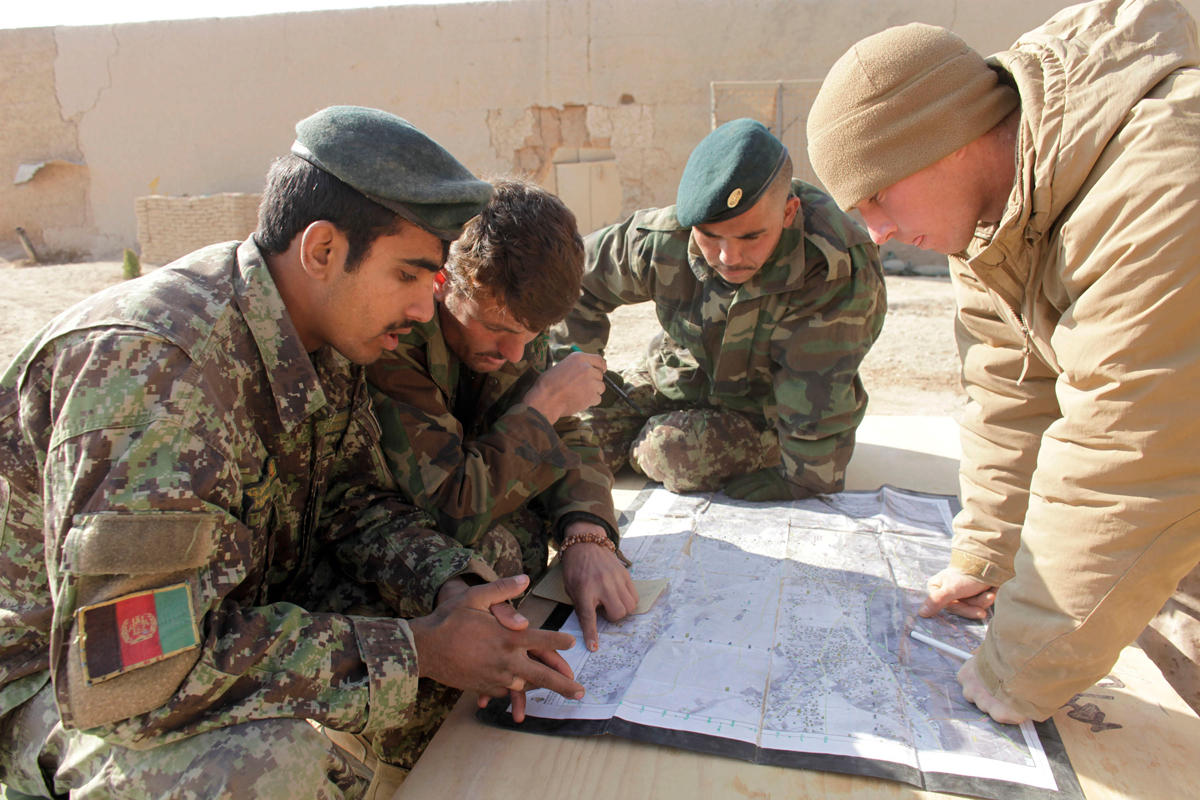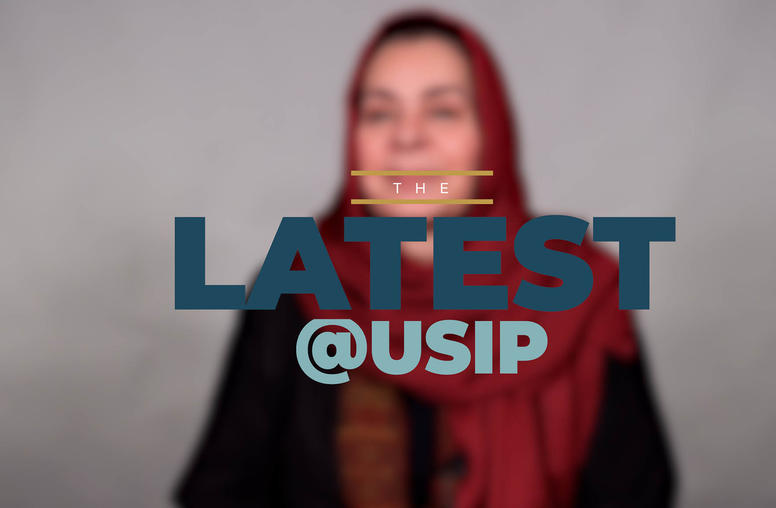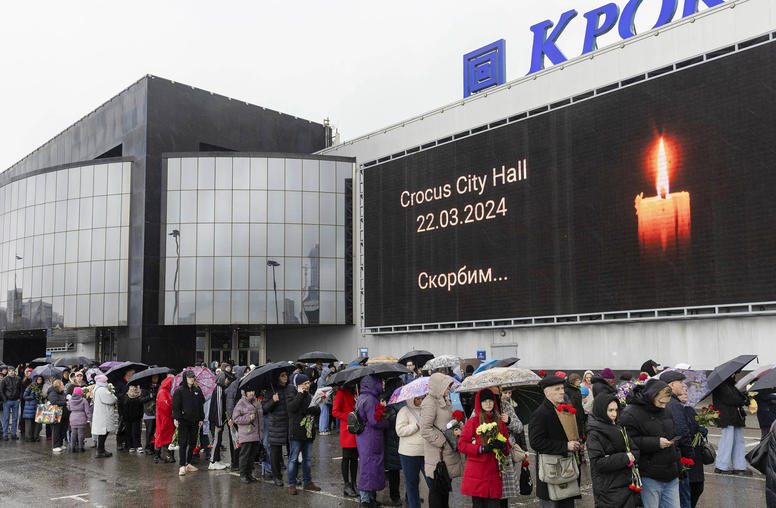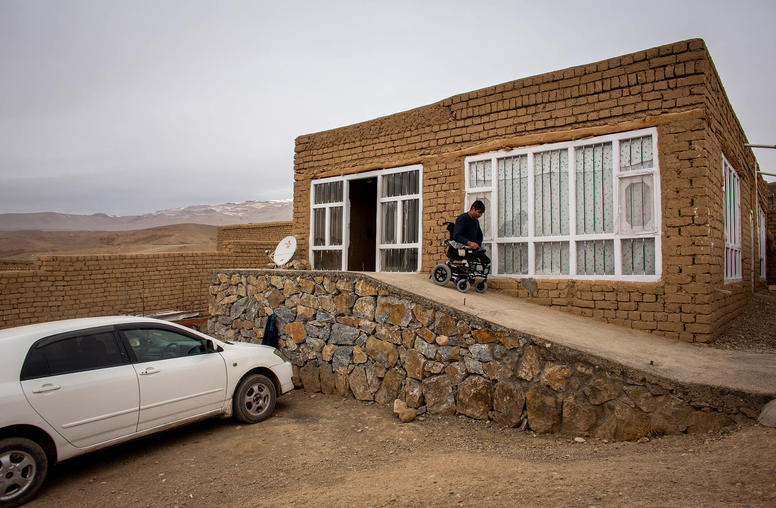Science, Technology and Peacebuilding at USIP
USIP’s Sheldon Himelfarb, director of USIP’s Center of Innovation for Science, Technology and Peacebuilding, and Andrew Robertson, a senior program officer with the center, discuss the latest developments on technology, science and peacebuilding – and where the new field is going.

USIP’s Sheldon Himelfarb, director of USIP’s Center of Innovation for Science, Technology and Peacebuilding, and Andrew Robertson, a senior program officer with the center, discuss the latest developments on technology, science and peacebuilding – and where the new field is going.
You recently helped organize a roundtable on technology, science and peacebuilding in partnership with the National Academy of Engineering. What makes this Roundtable unique?
To begin with, it’s unusual for the Institute to be working with the National Academy of Engineering, whose deep expertise is in science, engineering, and health. It is a sign of the times that so many problems once considered to be mainly development issues -- such as food and water security – are now conflict issues, and we benefit greatly from their expertise.
Secondly, this Roundtable is special for the mix of the membership; I’m not aware of any other body with the combination of conflict management, science and engineering expertise that this one has – not to mention the seniority of the members. It is an extraordinary forum for action.
Just to give you a sense, 20 organizations participated at the last meeting in December including government agencies (such as Defense, State and USDA), corporations (such as Qualcomm, Google and CH2M Hill), and nongovernmental organizations (such as the International Crisis Group, Interaction and Alliance for Peacebuilding). Undersecretary of State Maria Otero opened the meeting, which was co-chaired by President Charles Vest of the National Academy of Engineering and USIP President Richard Solomon.
Finally, I should add that the Roundtable is a bit of a departure for the Academy as well. While the Academy has a history of convening roundtables, I’m told that this is the first where the Academy has partnered as co-convener with an outside organization like USIP. Moreover, most roundtables tend to investigate problems and report their findings, while this one will be more action-oriented, with projects in the field if funding permits. It has a three year mandate which can be extended.
Has the connection between technology, science and conflict prevention been considered? Or, is this an emerging field?
If you looked at any post-conflict intervention – in Bosnia, Afghanistan, or Iraq, for example – it would be pretty difficult to make the case that science and technology are not being used to manage conflict. Information technology in particular provides a crucial platform for communication, training, election monitoring and many other applications. These technologies are, however, off the shelf. They were designed and built for other applications – either military or civilian – and adapted for conflict management.
The Roundtable sees an opportunity to make this process of technology adoption by peacebuilders more structured and less haphazard. By better understanding the problems faced by peacebuilders and the technical capabilities required for successful peacebuilding, we believe we can develop technology that is specifically designed for peacebuilding applications and therefore will be more effective.
What were the major issues discussed?
The goal of our most recent Roundtable meeting in December 2011 was to discuss and validate the Roundtable’s work agenda for the next two years. Based on member interests and capabilities, funding availability, and potential impact in peacebuilding, the Roundtable staff had narrowed a working list of 30 odd topics to an agenda of four: adapting agricultural extension to peacebuilding; sensing emerging conflicts; applying systems engineering tools to conflict management; and improving coordination through enhanced data sharing.
Although we were early in the development process, the participants quickly recognized the potential in the proposed projects and the challenges confronting each of them. Around sensing emerging conflicts, for example, the Roundtable members emphasized the importance of not getting carried away on the social media tidal wave. Although sites like Facebook and Twitter do provide massive data sets for analysis, traditional media and even physical data – ground radar results were mentioned as an example – need to be integrated to provide a complete picture.
Needless to say, each of the four topics has these kinds of complexities, which won’t be easy or quick to solve. But progress on any one of them would be significant.
What is the U.S. government doing to better advance this area?
The U.S. government is well represented on the Roundtable. State, USAID, the Department of Defense, and USDA are all members; the White House’s Office of Science and Technology Policy also has a seat at the table. Furthermore, not only are representatives of U.S. government agencies attending Roundtable meetings, they are also extremely active in providing expertise, guidance and resources to the Roundtable.
Given the siloed nature of the U.S. government, however, there is plenty of activity that is not directly linked to the Roundtable. For example, Intelligence Advanced Research Projects Activity within the intelligence community and Defense Advanced Research Projects Agency at the Department of Defense are also managing R&D projects investigating how to sense emerging conflicts. Similarly, USAID has an ongoing investigation to integrate systems methods into the Agency’s Conflict Assessment Framework. Where possible, the Roundtable intends to identify areas of common interest with the management of these projects and create partnerships.
What is USIP doing to advance this field? How is USIP using science and technology to prevent conflicts?
USIP has a rich history of using emerging technologies to prevent conflict – from the work we began in the 90s in the virtual diplomacy project to the pilot project we will do next month by conducting the first nationwide cellphone based poll of the Afghan people. We were one of the first organizations to help Ushahidi in Haiti prove the value of crowd-sourced data in crisis response, and we have since established this ground-breaking partnership with the National Academy.
Bu there is also more that we can be doing, especially with greater resources. We are actively looking for ways to expand our work with mobile technologies, gaming for training and innovations in everything from mobile courts to voter education through social media. The opportunities are quite literally limitless.
What happens next with the Roundtable?
At the end of the December meeting, the membership validated the Roundtable’s portfolio of activities by authorizing the creation of working subcommittees to develop action plans that address each topic area. Already, the most committed members in each topic areas have allocated experts to help guide subcommittee activity.
In fact, in one case, the USDA has even detailed a senior USDA official starting this February to spend four months working full time at the Institute to advance the work of the Roundtable on adapting agricultural extension to peacebuilding.
The next meeting of the Roundtable will be on June 25, 2012 at the Institute to review the results produced by these subcommittees. We’re steadily moving in the direction of pilot projects and other activities that will produce measureable results and new insights for our field.



